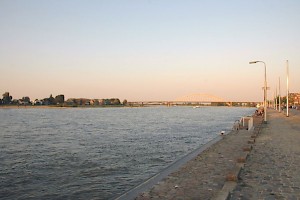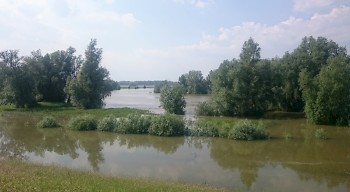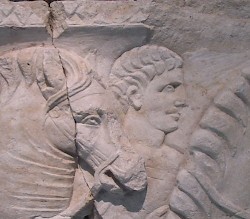Vahalis (Waal)
Q216171Waal (Latin Vahalis, Vacalis): main distribuary branch of the Rhine.

The Rhine is one of the mightiest rivers in Europe; the amount of water that flows along the point where it crosses the German-Dutch border is 2200 m³ per second. Here, the river divides itself into two branches: the large Waal (1540 m³) passes almost immediately along Nijmegen (Noviomagus) and continues to the west, whereas the comparatively small Lower Rhine (660 m³) continues to the northwest, and further divides into the IJssel, Lek, and Kromme Rijn (to Utrecht and the North Sea). All these rivers are navigable and can be dangerous streams in the late winter, when the snow on the Alps start to melt.
The land between the two distribuaries was in Antiquity called bat-agwiō. The first element is Germanic for "good", the second element refers to a piece of land along a river. The Romans translated it as insula, "the island of the Batavians". Is still called Betuwe. The two branches were well known: the Roman poet Virgil calls the Rhine bicornis, "with two horns".note

The banks of the Waal were inhabited by the Batavians, who had a great reputation as horsemen, and were specialized in crossing rivers on horseback. Their capital, situated on the south bank, was Batavadorum (later Noviomagus), which was connected to the sanctuary at Elst on the north bank. Near the bridge was also the Hunerberg legionary base.

The Waal, which the historian Tacitus describes as "wider and gentler" than the Lower and Kromme Rhine,note flows to the west for about 95 kilometer as the crow flies; here, it is joined by the Meuse.note Their common estuary is now called Haringvliet, and was in Antiquity known as Helinium.
The real length of the Waal is considerably more than 95 kilometer, because it has many bends. It has even been argued that the many meanders are behind the name of the river: Vahalis might be derived from a Germanic word wôh, "crooked". However, since most river names in the Netherlands are pre-Germanic, this explanation is almost certainly incorrect.